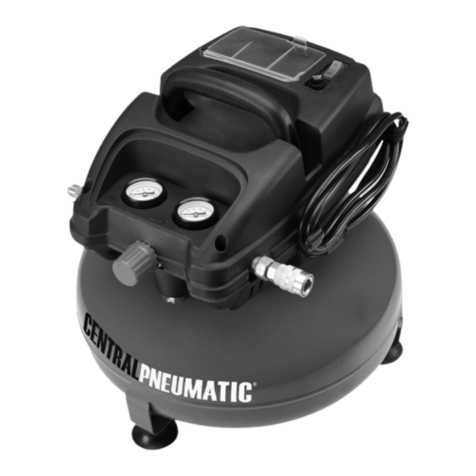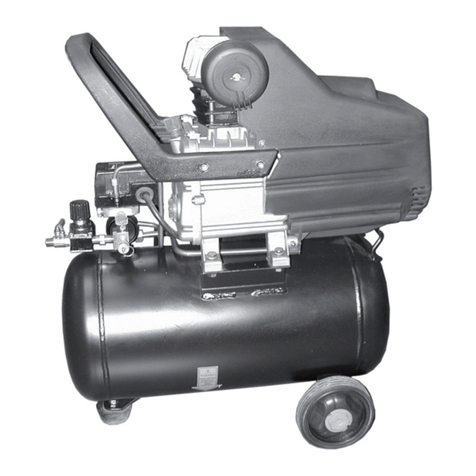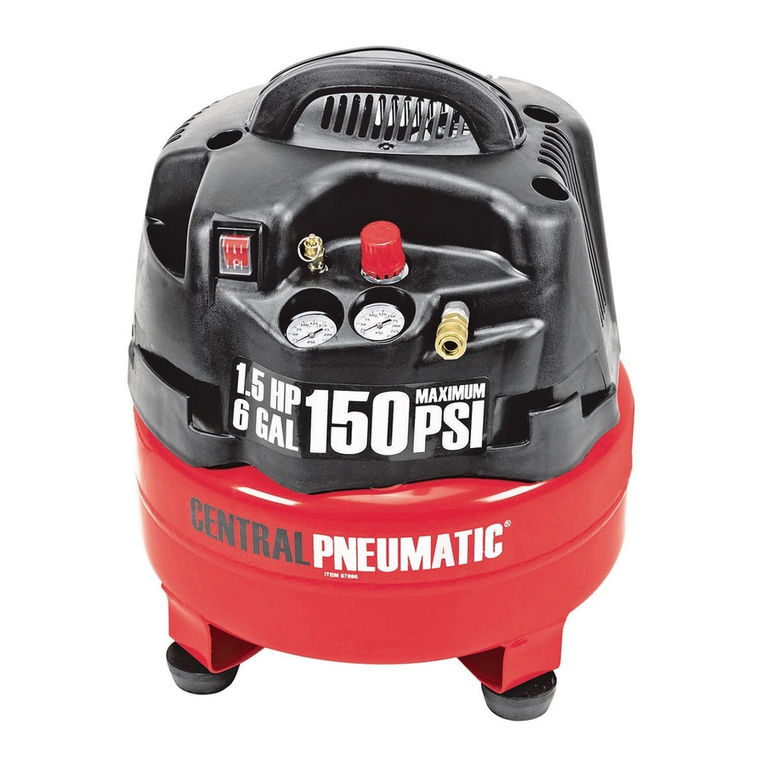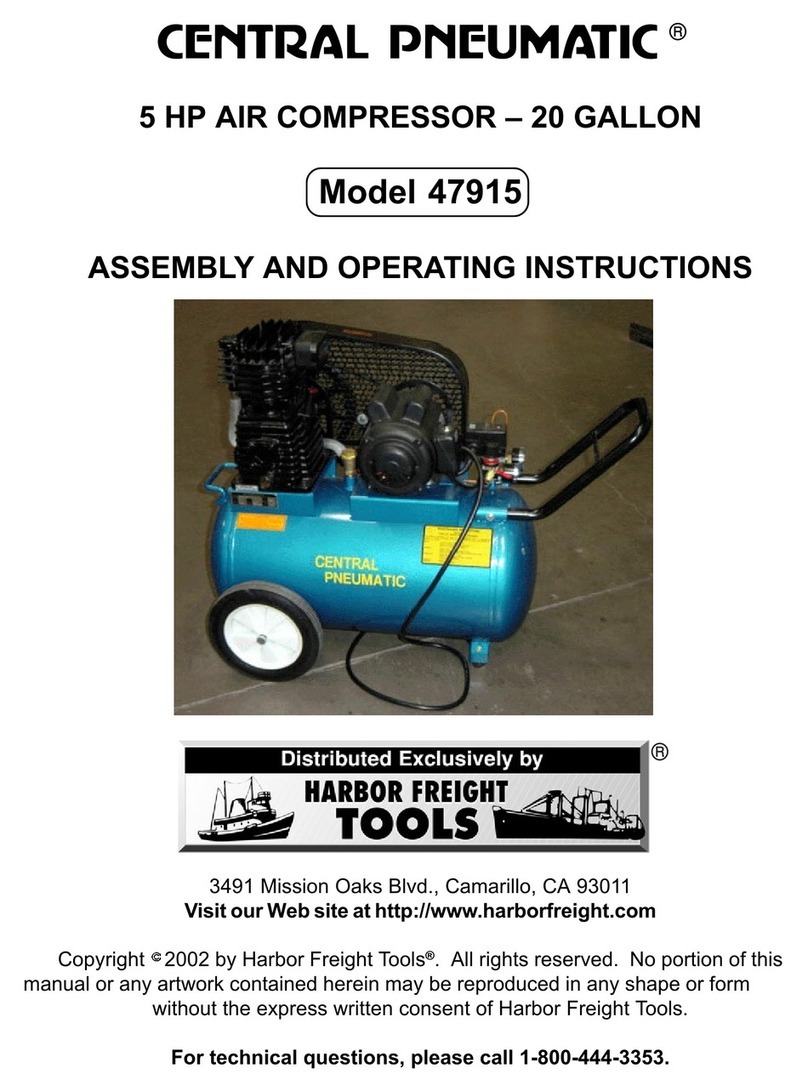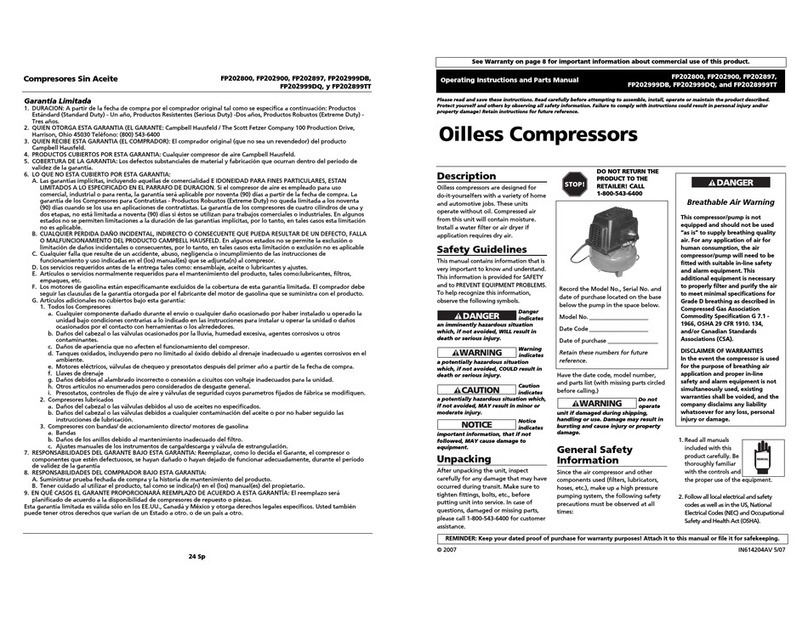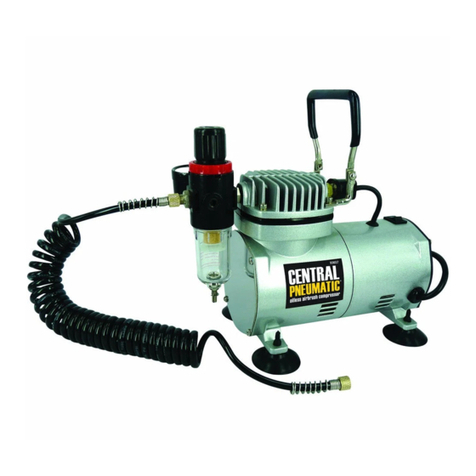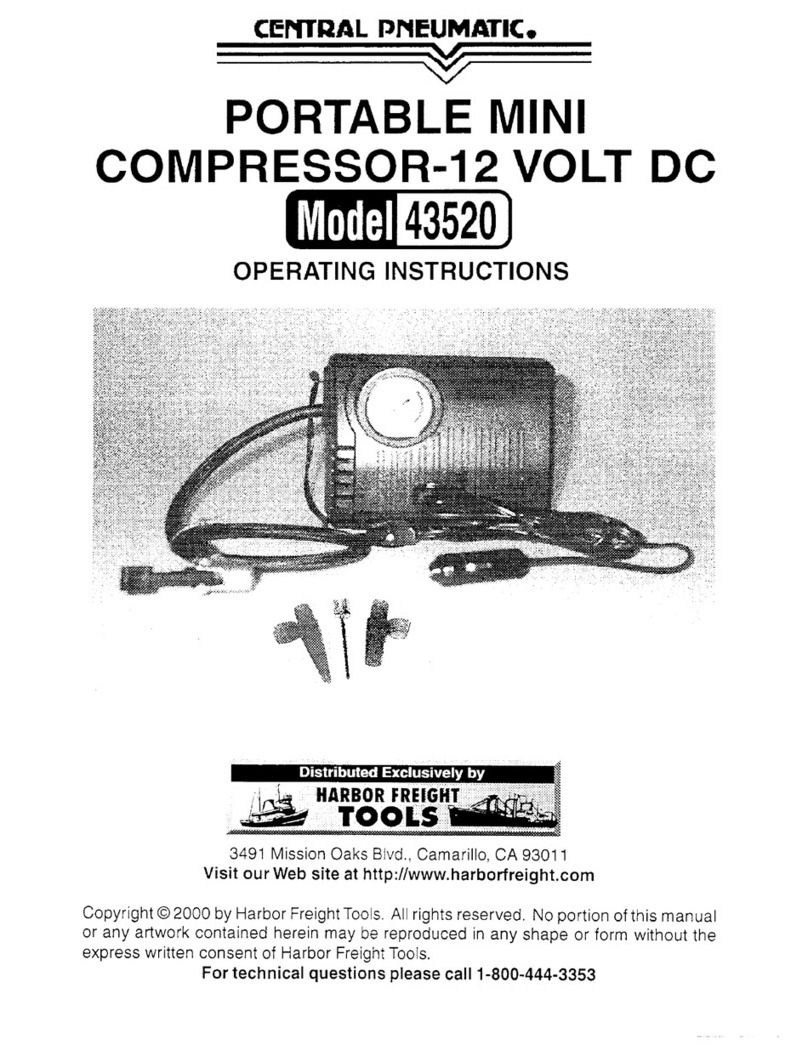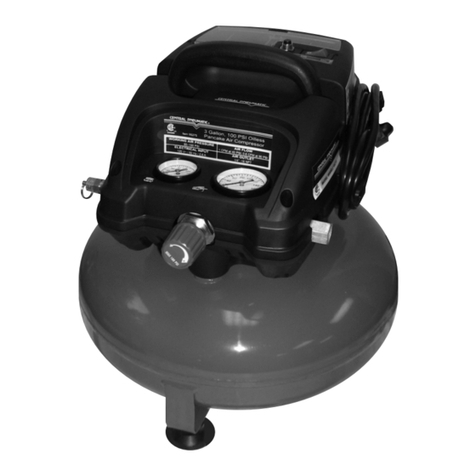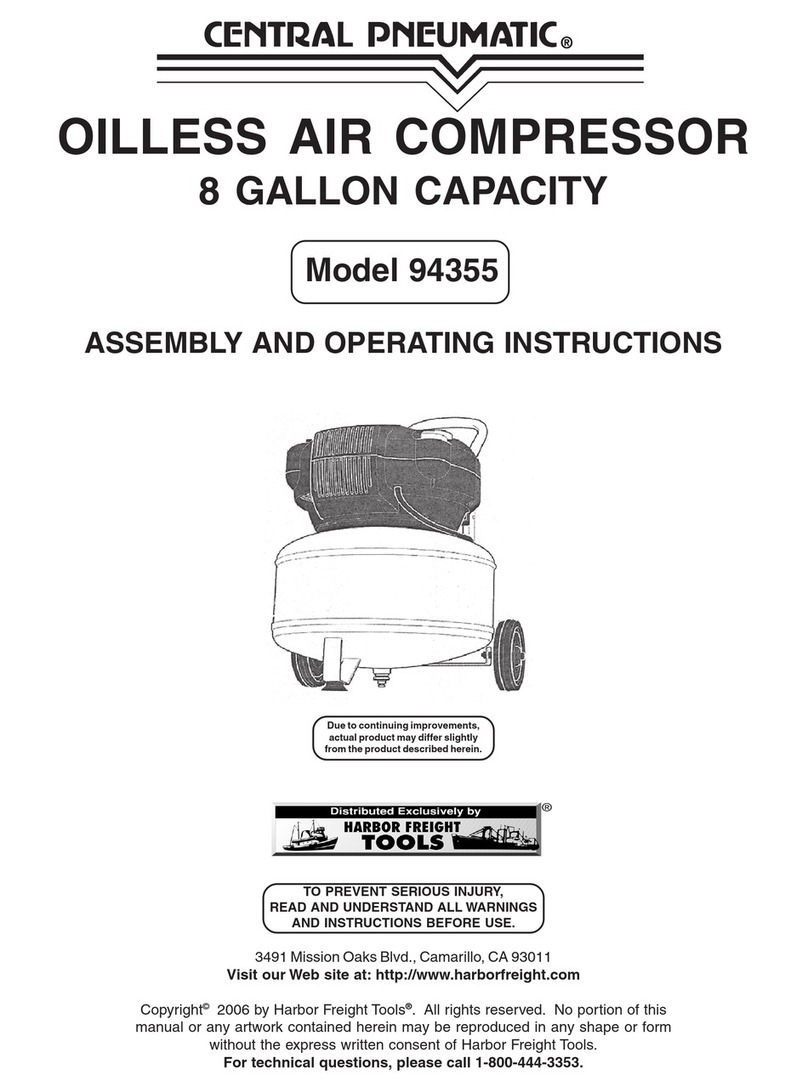
Page 5For technical questions, please call 1-888-866-5797.Item 62913
SAFETYOPERATIONMAINTENANCE INSTALLATION
Service Precautions
Have your compressor serviced by a qualified repair person using only identical
replacement parts. This will ensure that the safety of the compressor is maintained.
1. Before service, maintenance, or cleaning:
a. Turn the engine switch to its “OFF” position.
b. Allow the engine to completely cool.
c. Then, remove the spark plug
cap from the spark plug.
2. Keep all safety guards in place and in
proper working order. Safety guards include
muffler, air cleaner, mechanical guards,
and heat shields, among other guards.
3. Do not alter or adjust any part of the
equipment or its engine that is sealed by the
manufacturer or distributor. Only a qualified
service technician may adjust parts that may
increase or decrease governed engine speed.
4. Wear ANSI-approved safety goggles,
heavy-duty work gloves, and dust
mask/respirator during service.
5. Maintain labels and nameplates on
the equipment. These carry important
information. If unreadable or missing, contact
Harbor Freight Tools for a replacement.
6. Store equipment out of the reach of children.
7. Follow scheduled engine and
equipment maintenance.
Air Compressor Safety Warnings
1. Risk of fire or explosion - do not spray
flammable liquid in a confined area or towards a
hot surface. Spray area must be well-ventilated.
Do not smoke while spraying or spray where
spark or flame is present. Arcing parts - keep
compressor at least 20 feet away from explosive
vapors, such as when spraying with a spray gun.
2. Risk of bursting - do not adjust regulator higher
than marked maximum pressure of attachment.
3. Risk of injury - do not direct air
stream at people or animals.
4. Do not use to supply breathing air.
5. Keep compressor well-ventilated.
Do not cover compressor during use.
6. Add correct amount of compressor oil before
first use and every use. Operating with the
incorrect amount of oil causes permanent
damage and voids warranty. To prevent
damage, do not use with overfilled or low oil.
7. Drain Tank daily and after use. Internal rust causes
tank failure and explosion.
8. Do not remove the valve cover or
adjust internal components.
9. Compressor head gets hot during operation.
Do not touch it or allow children nearby
during or immediately following operation.
10. Do not use the air hose to move the compressor.
11. Release the pressure in the
storage tank before moving.
12. The use of accessories or attachments not
recommended by the manufacturer may
result in a risk of injury to persons.
13. All air line components, including hoses, pipe,
connectors, filters, etc., must be rated for a minimum
working pressure of 150 PSI, or 150% of the
maximum system pressure, whichever is greater.
14. Industrial applications must follow OSHA guidelines.
15. Maintain labels and nameplates on the
compressor. These carry important safety
information. If unreadable or missing, contact
Harbor Freight Tools for a replacement.
16. This product is not a toy.
Keep it out of reach of children.
17. People with pacemakers should consult their
physician(s) before use. Electromagnetic
fields in close proximity to heart pacemaker
could cause pacemaker interference or
pacemaker failure. Caution is necessary when
near the engine’s magneto or recoil starter.
18. WARNING: The brass components of this product
contain lead, a chemical known to the State
of California to cause cancer and birth defects
or other reproductive harm. (California Health
& Safety Code § 25249.5, et seq.)
19. WARNING: The cord of this product contains
lead and/or di (2-ethylhexyl) phthalate (DEHP),
chemicals known to the State of California
to cause cancer, and birth defects or other
reproductive harm. Wash hands after handling.
(California Health & Safety Code § 25249.5, et seq.)
SAVE THESE INSTRUCTIONS.

